
Seoul is a city where ancient traditions blend effortlessly with modern innovation. During my recent trip to South Korea I explored the rich cultural and historical tapestry of the city, and I’ve gathered seven unforgettable experiences that offer a deep dive into Korea’s heritage. Whether you’re a history buff, a foodie, or someone who wants to truly connect with local culture, these activities will give you an authentic perspective of Seoul. Here are the 7 must-do experiences in Seoul, South Korea, that you won’t want to miss:
This post contains affiliate links. If you make a purchase through these, I may earn a small commission at no extra cost to you, which helps me keep this blog running. Thanks for your support 🙂
Table of Contents
Toggle1) Visit the Palaces: Walk Through Korea’s Royal History
Seoul’s palaces are not just magnificent architectural marvels; they are windows into Korea’s royal past and in particular, portals to the Joseon Dinasty. The most famous of these is Gyeongbokgung Palace, built in the 14th century, with its sprawling grounds and the iconic Gwanghwamun Gate. The opulence of the palace, its beautiful gardens, and the changing of the guard ceremony are must-see highlights.
But don’t stop there! Changdeokgung Palace, initially built as a secondary royal residence, is often regarded as the most authentically Korean. Its Secret Garden is a serene escape that feels like stepping into a living painting. Then there’s Deoksugung Palace, which is surrounded by modern skyscrapers and gives a fascinating contrast of old and new.
Each palace tells a unique story of Korea’s history, and exploring them will make you feel like you’ve stepped back in time. I highly recommend checking the guided tours, included with the entry ticket, they run daily in multiple languages and are a must for uncovering the rich history of these sites.
Pro Tip: Tickets are very affordable ranging from 1,000 to 3,000 won (about 1–2 USD), and wearing a hanbok (Korean traditional clothing) grants you free entry!
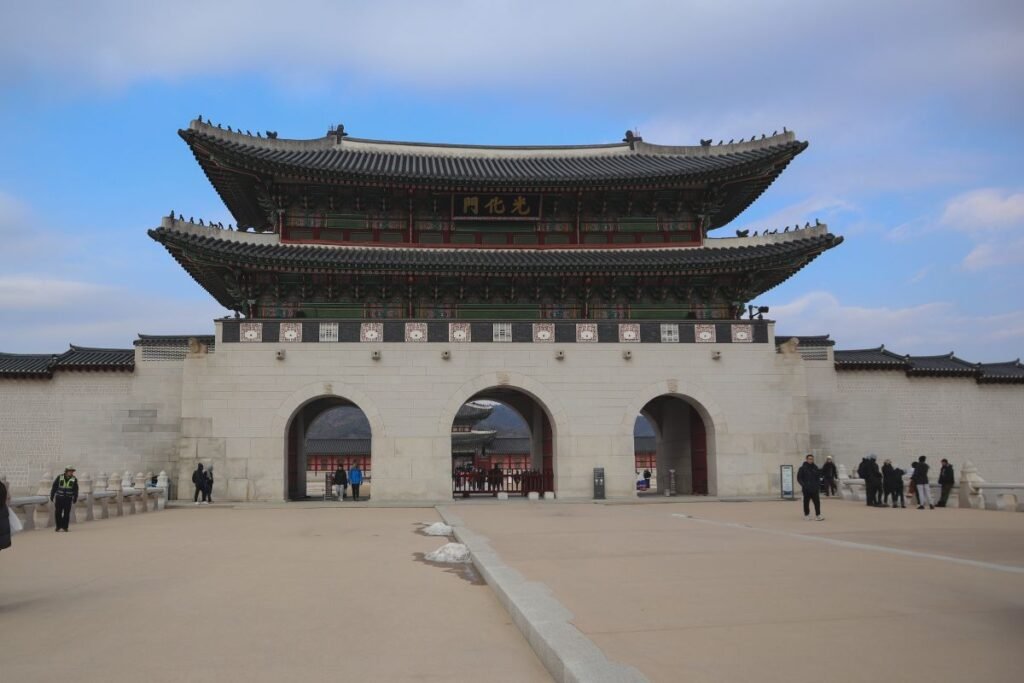
2) Day Trip to the DMZ from Seoul: Witness the Division of a Nation
No trip to South Korea is complete without visiting the Demilitarized Zone (DMZ), one of the most historically significant and tense regions in the world. Just a short trip from Seoul, join a guided tour to explore key sites like the Dora Observatory, where you can peer into North Korea, and the Third Infiltration Tunnel, an attempted passage for infiltration dug by the North. At Imjingak Park, you’ll find monuments and relics that embody the hope for reunification. Standing at the border itself is a deeply humbling experience, offering a sobering yet unforgettable perspective on Korea’s complex history.
Organised tours from Seoul are not only convenient but also the only way to access the military-restricted areas. These tours handle all logistics and provide expert insights, ensuring a seamless and enriching experience.
For more tips and insights, don’t miss my dedicated blog post about my DMZ experience—it’s packed with practical advice, and everything you need to make the most of your visit.
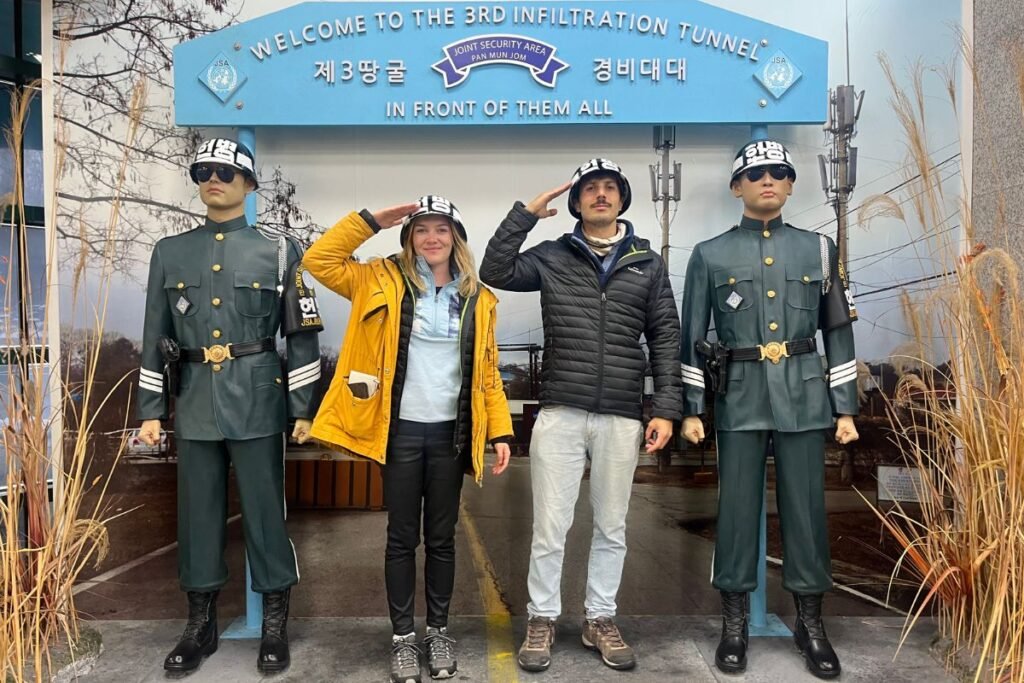
3) Try Korean BBQ: A Culinary Tradition Like No Other
You can’t visit Korea without indulging in its most famous culinary experience—Korean BBQ. Whether you’re dining in a traditional restaurant or grilling your meat at the table in a bustling restaurant, Korean BBQ is a communal activity that’s not just about food but also about connection. Choose from cuts of beef, pork, or chicken, and grill them over a charcoal flame right in front of you. Don’t forget to wrap your grilled meat in a crisp lettuce leaf with some garlic, ssamjang (fermented bean paste), and kimchi. It’s the ultimate way to experience Korean food culture and taste the heart of its culinary traditions.
I’ve had Korean BBQ in many places around the world, but nothing compares to the flavours in Seoul. My favourite neighbourhood for Korean BBQ is Myeong-dong, where you’re spoiled for choice. We were particularly impressed by Muhangamdong—the meat quality and service were outstanding! The food was so delicious, I couldn’t resist going back again before leaving South Korea. Here is their location.
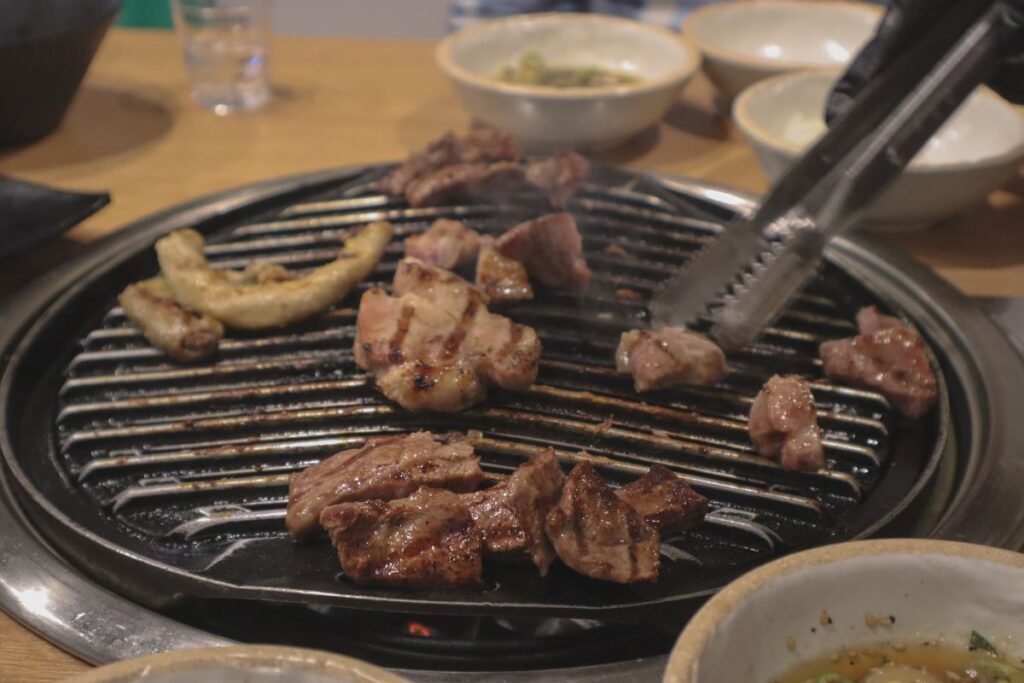
4) Visit a Tea House and Try Authentic Korean Tea
To step into a more peaceful and reflective side of Korean culture, spend some time in a traditional Korean tea house. These tea houses are more than just places to sip tea—they’re a gateway to centuries-old traditions. Many are set in hanok-style architecture, with warm wooden interiors and cosy floor seating that instantly transport you to another time.
Here, you’ll be introduced to an array of authentic Korean teas, from earthy green tea and roasted barley tea to the bold flavours of ginger, jujube, and the fruity-sweet omija. My personal favourites? Definitely the soothing ginger and the sweet, slightly tart jujube. To make the experience even more special, these teas are often served with traditional Korean treats like tteok (rice cakes) and yagkwa (honey cookies), and gotgamssam (dried persimmons wrapped around walnuts).
Sitting down in a peaceful tea house, sipping on these delicate brews, and nibbling on the sweets is a chance to pause, reflect, and truly immerse yourself in Korea’s tea culture. It’s more than just a drink—it’s an experience that connects you to the heart of Korean tradition.
Pro Tip: Wander through Insadong’s quaint alleyways, where you’ll stumble upon some of the best tea houses.
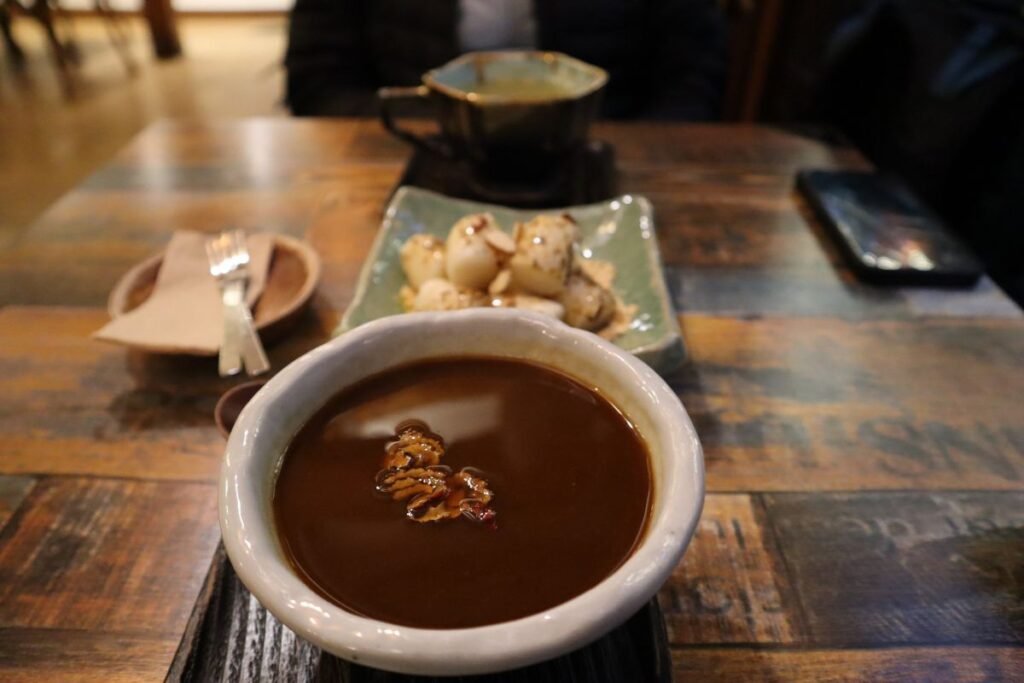
5) Eat and Shop at Myeong-dong: A Feast for the Senses
Myeongdong Night Market is a bustling hub of food, fashion, and culture that draws both locals and tourists. The vibrant streets are lined with food stalls offering iconic Korean street food like spicy tteokbokki, crispy mandu, and sweet hotteok. Beyond the food, Myeongdong is a shopping paradise with an eclectic mix of trendy boutiques, Korean beauty shops, and K-pop merchandise.
As the sun sets, neon lights fill the streets, creating a lively atmosphere perfect for exploring into the night. You’ll also find street performances and entertainment, adding to the energetic vibe of the area. I visited Myeongdong during the winter, and even though it was -10°C, I was amazed to see so many people out and about, enjoying the market until late.
With its combination of delicious food, unique shopping, and cultural experiences, Myeongdong Night Market is a must-visit spot for anyone wanting to dive into the heart of Seoul’s nightlife. Whether you’re here to eat your way through Korea’s street food scene or just get lost in the neon-lit chaos, Myeongdong is a night-time adventure you won’t forget.
The market stays open late, making it ideal for night owls. If you’re visiting Seoul, Myeongdong is an unforgettable experience.
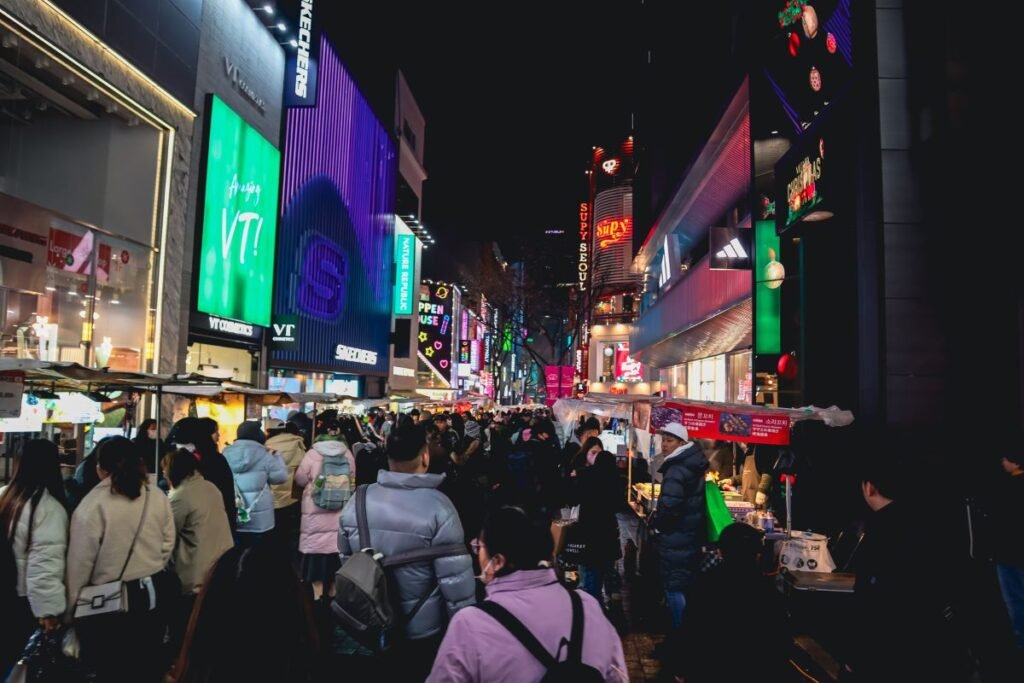
6) Visit the Museums: Understand the Korean War and Post-War Korea
Seoul’s museums offer a fascinating look into Korea’s turbulent past, from the daily life of Koreans during the Joseon Dynasty to the impact of the Korean War and the country’s post-war rise.
The National Folk Museum, located within Gyeongbokgung Palace, offers a glimpse into everyday Korean life with over 4,000 artifacts, including ancient farming tools and quirky totem poles once used to guard villages. Entry is free with your palace ticket, and the museum is open from 9 AM to 6 PM (with extended hours on some days—check ahead!).
For a more modern perspective, visit the National Museum of Korean Contemporary History, also free to enter and open from 10 AM to 6 PM. This museum highlights Korea’s remarkable journey from a war-torn nation to a global powerhouse in just a few decades.
Both museums are a must for gaining a deeper appreciation of Korea’s resilience and the enduring strength of its cultural identity.
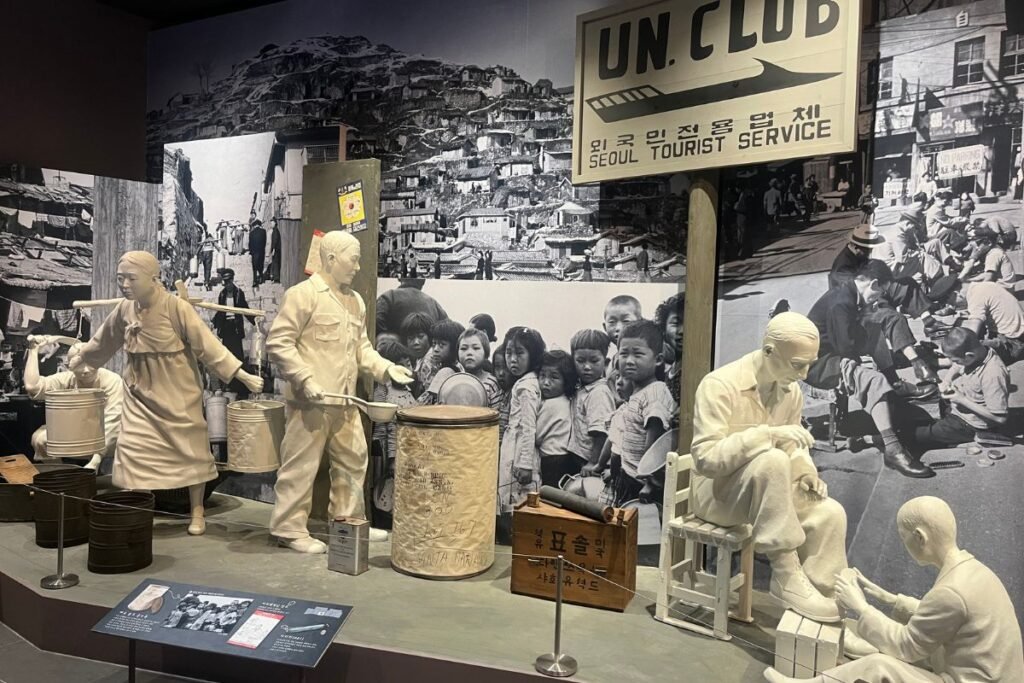
7) Visit Bukchon Hanok Village: Step Back in Time
Located in the heart of the city, Bukchon Hanok Village offers a glimpse into traditional Korean life. This historic neighborhood boasts over 900 traditional hanok houses from the Joseon Dynasty, it is a peaceful retreat from the modern world. As you walk through the village, you can almost feel the history seep through the walls of these centuries-old homes. Many of the houses are still inhabited by local families, adding an authentic touch to the experience. Visitors can wander its charming, hilly streets for free from 10:00 AM to 5:00 PM (Monday–Saturday, closed Sundays). It’s a beautiful place to take a leisurely stroll, capture some stunning photographs, and immerse yourself in the peaceful ambiance of old Seoul.
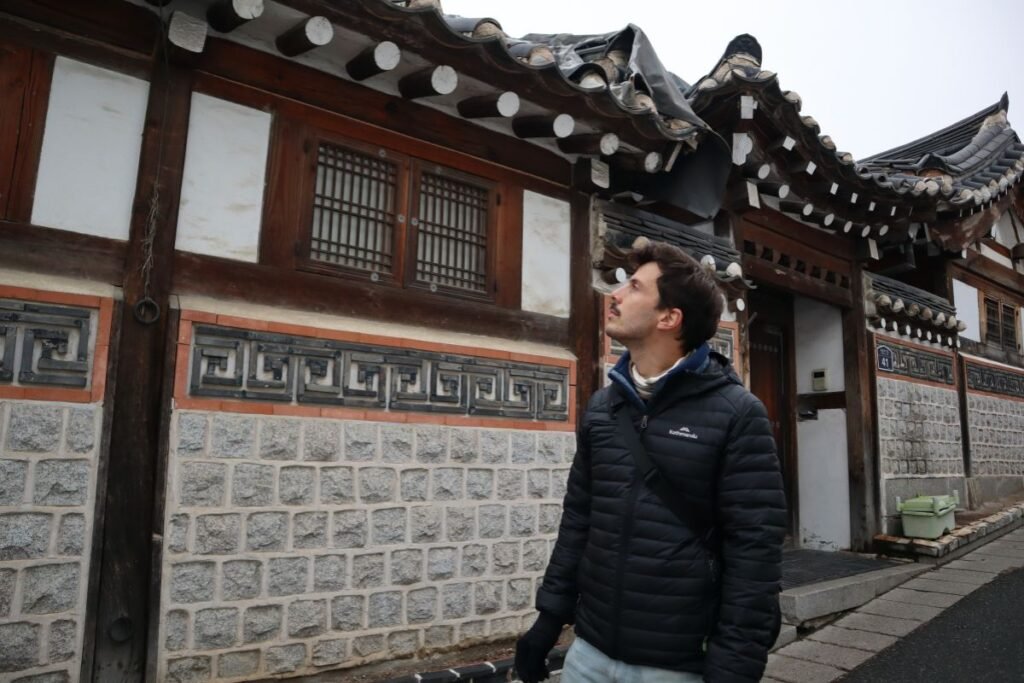
Final Thoughts
Seoul is a city that offers a mix of experiences, and these seven activities will ensure you leave with a deep understanding of its history and culture. From the magnificence of the palaces to the soul-stirring visit to the DMZ, every experience will leave a lasting impression. So, whether you’re a history lover or someone seeking to dive deep into Korean culture, these activities are a must-do to truly experience Seoul’s past, present, and future.



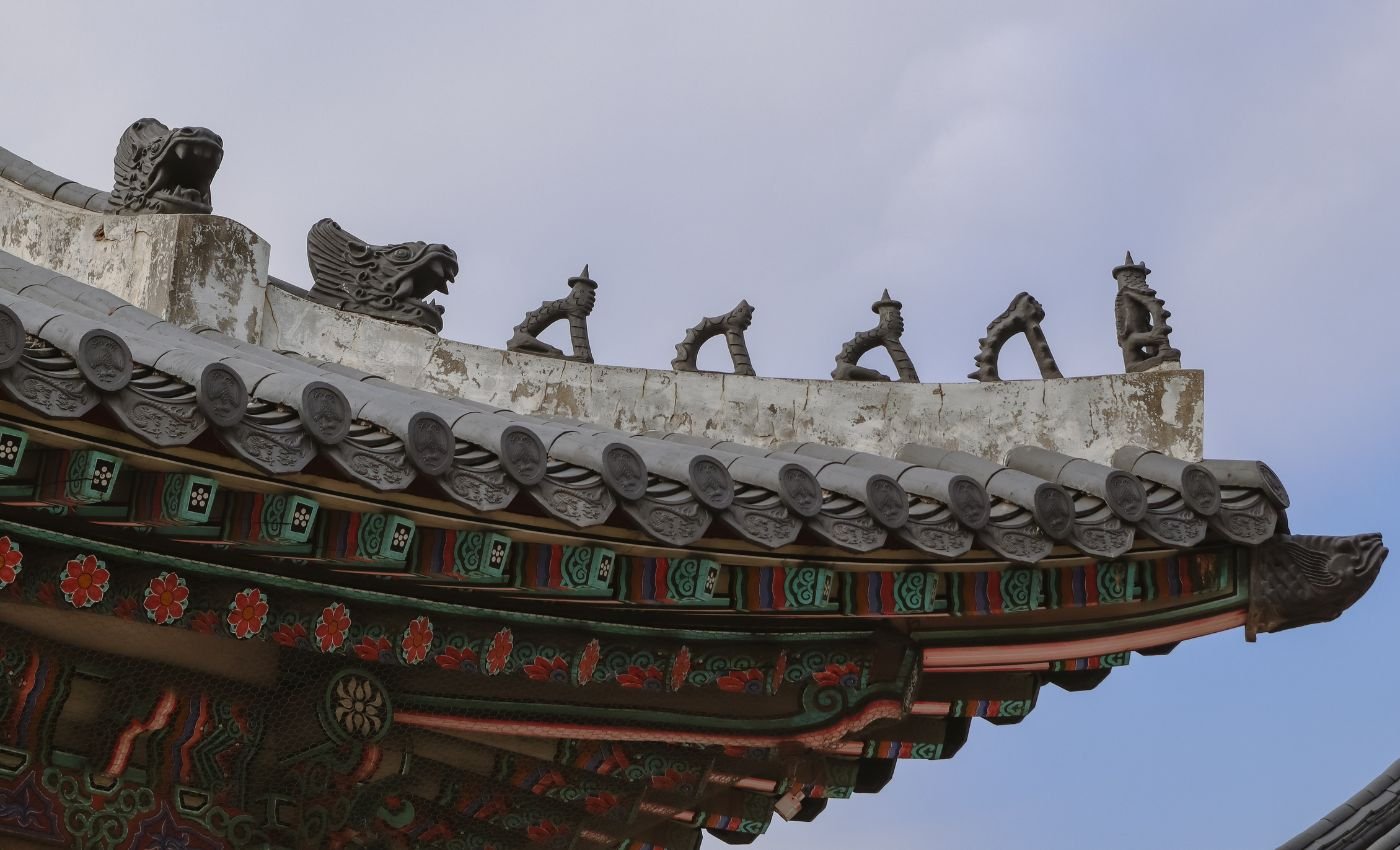
Antonetta Wisoky
07/07/2025
Thank you for the auspicious writeup It in fact was a amusement account it Look advanced to far added agreeable from you However how can we communicate